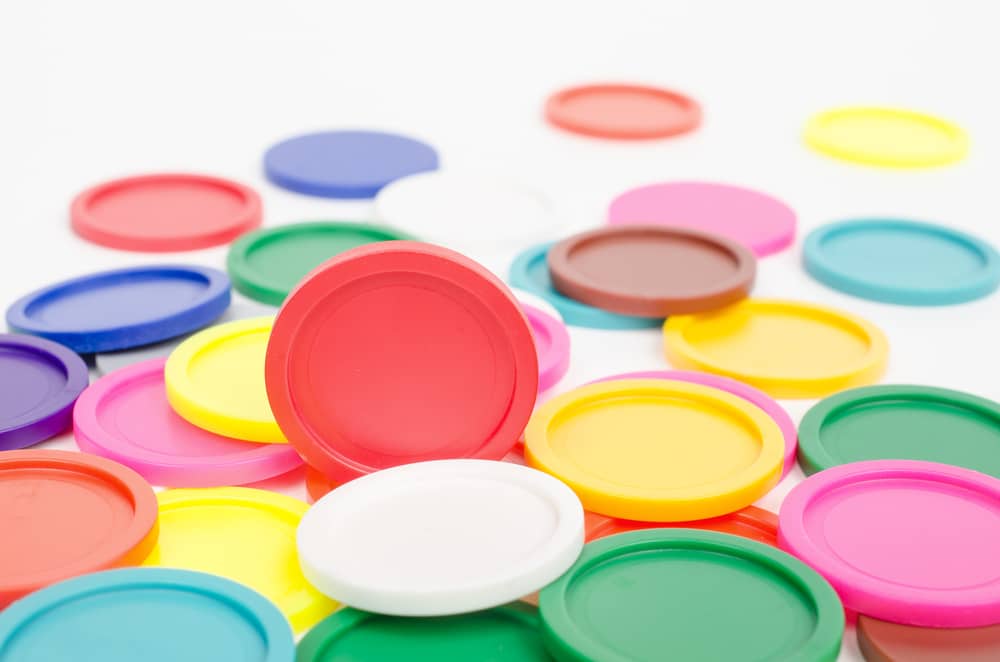
10 Dynamic Spanish Speaking Activities to Get Your Students Talking
As a Spanish language instructor, your ultimate goal is to get your students speaking confidently (and correctly!) in Spanish.
But as you probably know, this doesn’t always come easy.
It requires a lot of practice and encouragement, as well as some effective activities that will engage and challenge your students.
In this post, you’ll get 10 great Spanish speaking activities you can use in your language lessons.
These can be adapted to the appropriate level and age, so they’ll work well in any classroom.
Contents
- 1. Remember the Story
- 2. A Typical Night Out
- 3. Riding Shotgun
- 4. Roll the Dice
- 5. Meaningful Debate
- 6. Open a Restaurant
- 7. Assemble Something
- 8. Get to Know Your Classmates
- 9. Spontaneous Speaking
- 10. Pay Your Token
- Tips for Using Spanish Speaking Activities
Download: This blog post is available as a convenient and portable PDF that you can take anywhere. Click here to get a copy. (Download)
1. Remember the Story

For this activity, think of a short story (true or made up) that you can tell your students. The length and complexity will depend on their level. After hearing the story, the students must retell it to a partner, relaying as much detail as they can remember.
You can write a few questions on the board to guide students when it’s their turn to retell the story. For example:
- ¿Qué pasó? (What happened?)
- ¿En dónde pasó? (Where did it happen?)
- ¿Cuándo pasó? (When did it happen?)
- ¿Cómo terminó? (How did it end?)
Depending on what your students need to practice, you could also have them retell the story in a different person. For example, if you tell the story in the first person, have students retell it in the third person. For more advanced students, you can have them tell each other stories.
This activity allows your students to practice many skills including vocabulary, grammar structures and verb tenses. It also forces your students to pay attention and remember, both important aspects of communicating in real life.
2. A Typical Night Out

This is a role-play activity in which your students will pretend to be hanging out at a bar or cafe, chatting with friends or meeting new people. There’s just one rule: They can only speak in Spanish.
To make it feel more real, you can rearrange your classroom. Move the chairs, play some music in the background and bring in snacks and drinks.
This activity is great for beginners since they can practice introducing themselves, asking simple questions and sharing basic information about their lives and interests.
For more advanced students, the conversations can go deeper. You can even give them a topic of conversation, like a real or made-up current event that everyone’s talking about.
To encourage conversation with a shy group, you can prepare a few cards in advance with roles or situations that students will take on. For example:
- Ayer tuviste un accidente automovilístico. (Yesterday you were in a car accident.)
- Cuando eras niño/niña viviste en otro país. (When you were a kid you lived in another country.)
- Inventaste un producto muy conocido. (You invented a well-known product.)
3. Riding Shotgun

This activity will let students practice giving directions and can be used as a fun routine-breaker.
- Rearrange your classroom and label every desk as a specific place in town. For example: oficina de correos (post office), escuela de idiomas (language school), supermercado (supermarket) and so on.
- Label the spaces between the desks as different streets. For example, Calle Emiliano Zapata (Emiliano Zapata Street) or Avenida Revolución (Revolution Avenue).
- Then, pair up your students and give each a set of instructions, like this:
Estás en la librería y necesitas ir a la oficina de correos.
Después de mandar una carta, tienes que comprar leche y pan. (You’re at the bookstore and need to go to the post office.
After sending a letter, you need to buy milk and bread.)
- One student will be the driver and the other will be the passenger guiding the driver. Each passenger should give directions aloud to their driver in Spanish.
- Once each pair arrives at the final destination, partners switch spots and receive a second set of instructions.
This activity is a great way to get your students out of their seats and speaking in Spanish by simulating a real-life experience.
4. Roll the Dice

This one can easily be a warm-up activity or a routine-breaker for students who already know several verb tenses.
You’ll need two dice, ideally of different colors. Make two columns on the board (one for each die) and write the numbers 1-6 and their accompanying descriptions.
The first dice refers to expressions of time and verb tenses. For example:
1. Hoy [presente] (p. ej. hablo)
2. En este momento [gerundio] (p. ej. estoy hablando)
3. Ayer [pretérito indefinido] (p. ej. hablé)
4. El próximo año [futuro simple] (p. ej. hablaré)
5. Mañana [futuro próximo: ir a + infinitivo] (p. ej. voy a hablar)
6. Antes [imperfecto] (p. ej. hablaba)
Each number on the second dice represents a question word:
1. ¿Quién? (Who?)
2. ¿Cuándo? (When?)
3. ¿Por qué? (Why?)
4. ¿Cómo? (How?)
5. ¿Dónde? (Where?)
6. ¿Qué? (What?)
To begin, one student rolls both of the dice. Let’s say they rolled 2 (en este momento – gerundio) and then 4 (¿cómo?). The student then has to build a sentence that describes how an action is happening at this moment, using the present progressive. For example:
En este momento mis compañeros de clase me están mirando de una manera incómoda.
(At this moment my classmates are looking at me in an awkward way.)
If you want to encourage more speaking, ask a few follow-up questions based on whatever action or situation they created. You can also turn this into a pair/group activity to give students even more talking time.
5. Meaningful Debate

Never underestimate the classic debate! It’s a great way to develop critical thinking, argumentation and questioning, effective communication and speaking skills.
It can be done with any age students, as long as they’re at least intermediate-level speakers. Even kids can give their opinions on current matters!
Try to think outside the box and choose engaging topics based on your students’ interests and personalities. Topics related to Spanish-speaking countries can engage students while expanding their cultural awareness. For example:
- Have your class read an article like this one about whether the U.S. should apologize for the coup against Allende in Chile and then debate about it.
- Or you could debate about the difference between being an “expat” and a “migrant,” and why some societies note the difference.
Current local and global matters will give your students practice speaking about topics they might discuss with a Spanish speaker in real life.
6. Open a Restaurant

Opening a restaurant doesn’t happen in a day. Likewise, this is a more involved and longer-term Spanish-learning project.
You can take this activity as far as you want to, but here’s what it could look like over three classes:
- In the first class, randomly choose two owners for each restaurant. Each pair of owners will then plan interview questions for potential staff while the rest of the class prepares their CVs for the interviews. Then the owners will conduct interviews and hire their staff.
- Now that they’re in teams, each group can select a Spanish-speaking country for their restaurant and do some research on the food of that country (in class or as homework).
- In the second class, groups will create a menu and print or make a few copies of it. Groups must also agree on the logistics for the restaurant: name, theme, schedule, promotions, etc.
- In the third class, each team will present their restaurant to the class and invite them to visit. You can either have groups role-play the restaurant visits, or you could ask each team to prepare and bring in one of their restaurant’s dishes so you can all enjoy a multicultural lunch.
This activity gives everyone tons of opportunities to speak in ways that will be very useful for the real world.
7. Assemble Something

This activity encourages teamwork and collaboration while developing speaking skills. You’ll need building supplies like scissors, glue, rulers and markers and some recycled materials (get your students to help with this).
Put your student in groups and have them build something of your (or their) choice, such as a robot, a toy or a vehicle.
Another way to do this type of activity is for students to build or make something by following instructions from one another. Origami works wonders for this! You can pair up students and print out copies of written and illustrated instructions. Here are some guides for making five different origami animals.
Students will take turns giving and receiving instructions, so each can guide their partner to create the final figure. But make sure there’s no showing, only talking.
This activity encourages the practical use of the language to obtain a result and offers plenty of practice using the imperative tense.
8. Get to Know Your Classmates

In this activity, students will get to know each other by asking and answering questions.
To begin, form a circle with the whole class. One by one, students will take turns answering their classmates’ questions about themselves, interview style. Make sure everyone asks at least one question at some point during the activity.
Try to make this dynamic so the conversation can flow naturally. That’s to say, don’t follow a specific order of questions. The point is to let students speak, so if a specific subject interests them, encourage it.
If they’re having trouble coming up with meaningful questions, join in with your own questions to get the interview started. But be careful that it doesn’t become a two-person conversation with you and the featured student. Always encourage your students to join in, especially the ones that tend to speak less in class.
Ask less obvious questions, but don’t get too personal. Classmates may already know about their friends’ current hobbies and activities, so past experiences or future goals are good topics to try. This gives students practice with a variety of verb tenses, too.
9. Spontaneous Speaking

The aim of this exercise is to get students talking spontaneously and letting go of that fear of making mistakes.
- First, choose some images and display them. They can be anything: photos related to the topic you’ve been studying, a comic strip, famous people, pictures from the news, etc.
- Then, encourage your students to respond to the images with the first thing that comes to their minds (ideally in full sentences). Start off in pairs using a ping-pong style: students take turns saying something in response to the images. If you think they need it, give them some sentence starters.
- Once they’ve had a few minutes to practice, open up the activity for the whole class. As they’ve already practiced in pairs, they’ll have things to say and will feel more comfortable sharing.
- Keep a good pace, moving quickly from one to another, without stopping to correct their grammar or syntax. If there’s an important or repeated mistake, just say the correct sentence after them so they can spot the error without interrupting the flow.
If you teach in a mixed-ability class, you can stretch your higher-ability students with follow-up questions or ask them to translate key words to help your lower-ability students understand what they’ve said.
10. Pay Your Token

This activity helps to make sure that all students contribute equally. It works best in smaller groups of four or five, although you can start off in pairs to work on their confidence in speaking before moving to larger groups.
Each student starts off with seven tokens and must get rid of all of them. Students are encouraged to speak either about a certain topic or about some pictures, like in the previous exercise. Every time they say something, they put one of their tokens in the center of the table.
Again, this activity can be adapted to suit the needs of your students. You can provide them with some sentence starters, ask them to focus on opinions or let them get rid of two tokens if they build on what someone else said.
The key is to let them speak without establishing an order or a correct or incorrect way of doing it. No one will want to end up with a bunch of tokens, so they’ll be encouraged to join in and contribute to the conversation.
Tips for Using Spanish Speaking Activities
You’ll likely have a range of confidence levels and comfort speaking in your class. If you just let things play out, your strong students will get stronger and your weaker students will avoid speaking and therefore not improve.
Therefore, you need to incorporate extra support and engagement tactics for these students. Here are some tips to help these shy students relax and speak up more:
- Don’t make them the center of attention: This seems pretty basic, but too many times teachers ask students who hate being in the spotlight to perform in front of the class. This makes them terribly anxious and contributes to their fear of speaking a foreign language.
- Give them supporting resources and then “move away:” Depending on their ability, this support could be a full script or some key words. Allow these students to manipulate and explore the language without feeling they’re being assessed on everything they do. Let them work with someone they feel comfortable with and avoid correcting them too often until they’re more confident.
- Make it fun: Take the attention away from the speaking itself by giving students masks with the faces of famous people or asking them to try using different intonations or silly voices. They’ll feel the focus is somewhere else and will feel less overwhelmed with all the speaking.
Remember that you can also use multimedia resources to encourage speaking, like this video of role-play exercises:
This can also be great practice for weaker students to do at home so they come to class feeling more confident in their speaking.
All of these activities simulate real-life scenarios in one way or another, so they’ll be super beneficial for your students.
You can also let these ideas inspire you to come up with your own.
Consider the situations your students might encounter if they were in a Spanish-speaking country, and you’ll have tons of options!
Download: This blog post is available as a convenient and portable PDF that you can take anywhere. Click here to get a copy. (Download)


